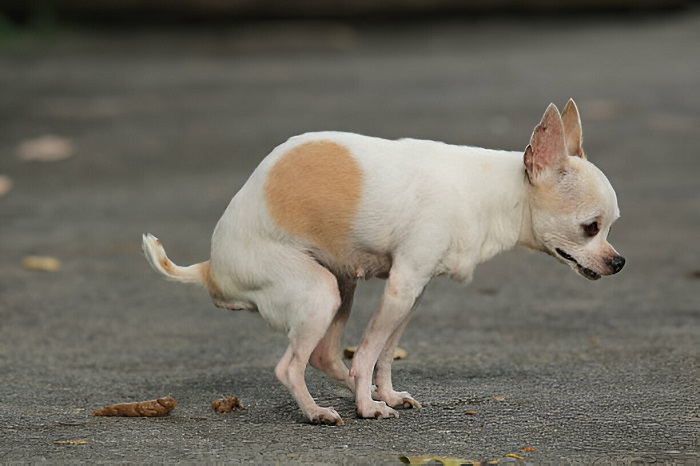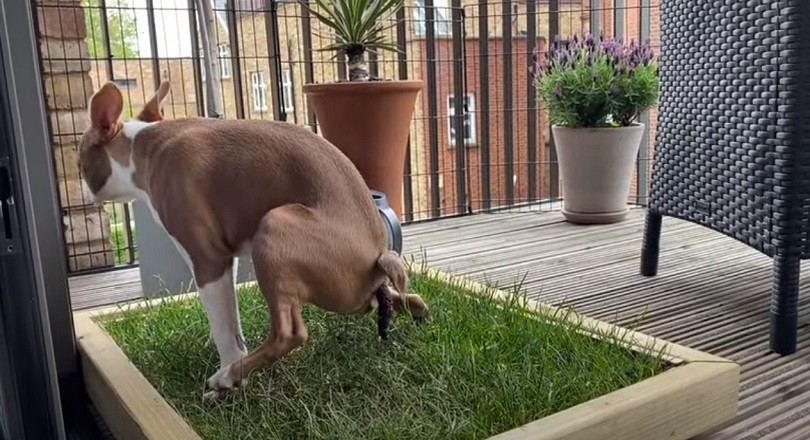Last Updated on February 28, 2025
Yes, dogs can poop and pee at the same time. It’s not unusual and depends on their habits and health.
Understanding your dog’s bathroom habits is crucial for maintaining their health. Dogs often have specific routines for relieving themselves. Some dogs may poop and pee simultaneously, while others do it separately. Knowing these habits can help identify any potential health issues early.
Regular observation of your dog’s bathroom behavior provides insights into their digestive and urinary health. Consistency is key, and sudden changes might indicate a problem that needs attention. Always consult your vet if you notice any unusual patterns. Ensuring a balanced diet and regular exercise also plays a significant role in maintaining your dog’s overall well-being.
Canine Bathroom Habits Explored

Understanding your dog’s bathroom habits can help you ensure their health. Some dogs poop and pee at the same time. This behavior can seem puzzling. Let’s explore why dogs do this and what it means.
Common Patterns In Dog Elimination
Dogs often have set bathroom routines. These routines can vary by breed. Some dogs pee first and poop later. Others do both at the same time. This is normal and varies by dog.
Here are some common patterns:
- Morning Routine: Many dogs are eliminated right after waking up.
- After Meals: Dogs often poop after eating.
- During Walks: Walks stimulate elimination.
Factors Influencing Simultaneous Elimination
Several factors influence why a dog might poop and pee at the same time. These factors can include:
| Factor | Description |
|---|---|
| Diet | Dogs with high-fiber diets may poop more often. |
| Training | Trained dogs may have set bathroom habits. |
| Health | Health conditions can affect elimination patterns. |
Here are some other factors:
- Age: Puppies may be eliminated more frequently.
- Exercise: Active dogs may poop and pee at the same time.
- Environment: Changes in the environment can affect habits.
Understanding these factors helps you monitor your dog’s health. Ensure your dog has a regular bathroom routine. This keeps them healthy and happy.
The Science Behind Dog Digestion
Understanding the science behind dog digestion can help dog owners. Dogs have unique digestive systems that influence their elimination habits. Let’s dive into the fascinating world of dog digestion.
Anatomy Of Dog Digestive System
The dog’s digestive system starts with the mouth and ends with the anus. The journey begins when your dog eats food. The food travels down the esophagus to the stomach. The stomach breaks down food with strong acids. From there, the food moves to the small intestine. Nutrients are absorbed in the small intestine.
The remaining waste moves to the large intestine. Water is absorbed in the large intestine. The waste becomes solid and forms stool. Finally, the stool moves to the rectum and is expelled through the anus.
How Digestion Affects Elimination Behaviors
Digestion directly impacts how and when a dog is eliminated. Dogs may poop and pee at the same time. This behavior is due to the proximity of the rectum and bladder. When a dog squats to poop, it often triggers the bladder.
The diet also plays a role in elimination habits. A balanced diet ensures smooth digestion and regular bowel movements. Poor diet can lead to irregular or difficult elimination. Stress and hydration levels also affect elimination behaviors.
Understanding these factors can help you manage your dog’s elimination habits better. Ensuring a healthy diet and reducing stress can improve your dog’s digestive health.
Training Tips For Managing Bathroom Breaks
Training your dog to manage bathroom breaks can be challenging. Dogs often poop and pee at the same time. With proper training, you can manage this behavior effectively. This section offers practical tips to help you.
Establishing A Routine
Creating a consistent routine is crucial for potty training your dog. Dogs thrive on consistency. Establishing a regular schedule helps them understand when and where to go. Here’s how to create a routine:
- Set specific times for bathroom breaks.
- Take your dog out first thing in the morning.
- Ensure bathroom breaks after meals and before bedtime.
- Use the same spot for bathroom breaks.
This consistency helps your dog understand the expected behavior. It also reduces accidents in the house.
Addressing Simultaneous Pooping And Peeing
Some dogs poop and pee at the same time. This is natural but can be managed. Follow these tips to handle it:
- Observe your dog’s behavior during bathroom breaks.
- Identify any patterns in their habits.
- Give your dog enough time to finish both actions.
- Reward them with treats and praise immediately after.
Being patient and observant is key. Encourage your dog with positive reinforcement. This helps them understand what is expected.
By following these tips, you can effectively manage your dog’s bathroom breaks. Consistency and patience are crucial in training your dog.

Frequently Asked Questions
Can Dogs Go Pee And Poop At The Same Time?
Yes, dogs can pee and poop at the same time. It is normal and often happens during their bathroom routine.
How Long After Eating Do Dogs Poop And Pee?
Dogs usually poop 30 minutes after eating. They often pee within 15 minutes after drinking. Timing can vary.
How Do You Know If Your Dog Wants To Pee Or Poop?
Dogs may sniff around, circle, or scratch at the door. They may also whine or pace restlessly.
How Long Can Dog Hold Pee And Poop?
Adult dogs can hold pee for 8-10 hours, while puppies need to go every 1-2 hours. Dogs usually poop 1-3 times daily.
Why Does My Dog Poop And Pee Simultaneously?
Dogs often poop and pee simultaneously due to convenience and habit. It saves time and energy during bathroom breaks.
Conclusion
Understanding your dog’s bathroom habits can improve their health and happiness. Regular monitoring is crucial for early problem detection. Always consult your vet with any concerns. Proper care ensures your furry friend stays happy and healthy. Don’t forget to reward good behavior during training sessions.

